
table of contents
- Types from A - J
- Types K - Q
- Types of R - V
- Types from W - Z
- frequently asked Questions
Red-crested birds are not uncommon in this country. But how do the respective species differ and how can they be recognized? Our overview helps.
In a nutshell
- Red-crested birds can be recognized primarily by their size and beak shape
- Males and females can have red hoods
- many of the red crested birds belong to the woodpecker family
- Escaped pets may also have red hoods
- Mix-ups can be ruled out with photos and a comparison
Types from A - J
great spotted woodpecker
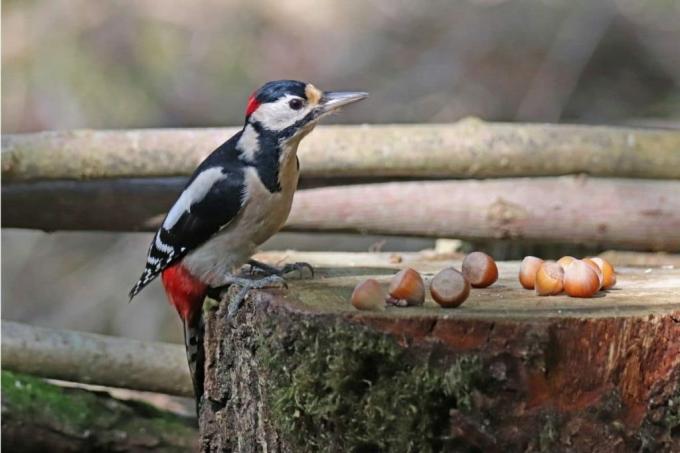
- Scientific name: Dendrocopos major
- Plumage color: black, white, red
- Size: about 23 to 26 centimeters
- Life expectancy: up to 11 years
- Diet: berries, insects, nuts, seeds
- Difference between males and females: Females do not have a red patch on their necks
- Occurrence: North Africa to northern Eurasia
- Migratory bird: only to a limited extent, short-distance migrant in particularly cold regions
Gray woodpecker

- Scientific name: Picus canus
- Plumage color: gray, green, red
- Size: about 27 to 32 centimeters
- Life expectancy: 5 to 10 years
- Food: mainly insects but also berries, nuts and seeds
- Difference Between Males and Females: Females do not have red markings
- Occurrence: North Africa to northern Eurasia
- Migratory bird: only partially, resident bird in temperate regions
Green woodpecker
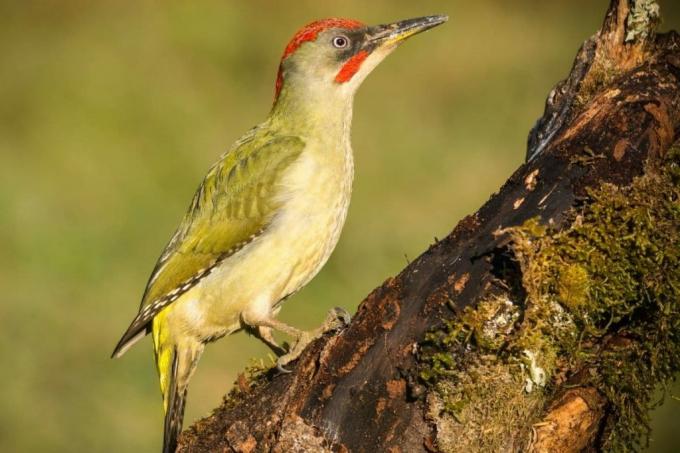
- Scientific name: Picus viridis
- Plumage color: gray-greenish, black, red
- Size: about 32 centimeters
- Life expectancy: up to 10 years
- Food: mainly ants and other insects, but also berries, nuts and seeds
- Difference between males and females: females have a black streaked beard, males a red streaked beard
- Occurrence: North Africa to northern Eurasia
- Migratory bird: only partially, in regions with milder winters, resident bird
Types K - Q
Small woodpecker
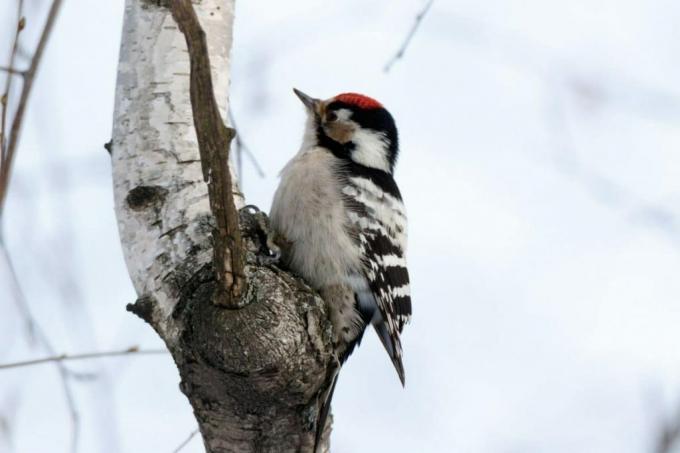
- Scientific name: Dendrocopos minor
- Plumage color: black, white, red
- Size: about 15 centimeters
- Life expectancy: 8 to 10 years
- Diet: berries, insects, nuts, seeds
- Difference Between Males and Females: Females do not have red markings
- Occurrence: North Africa to northern Eurasia
- Migratory bird: only to a limited extent, short-distance migrant in particularly cold regions
Middle woodpecker
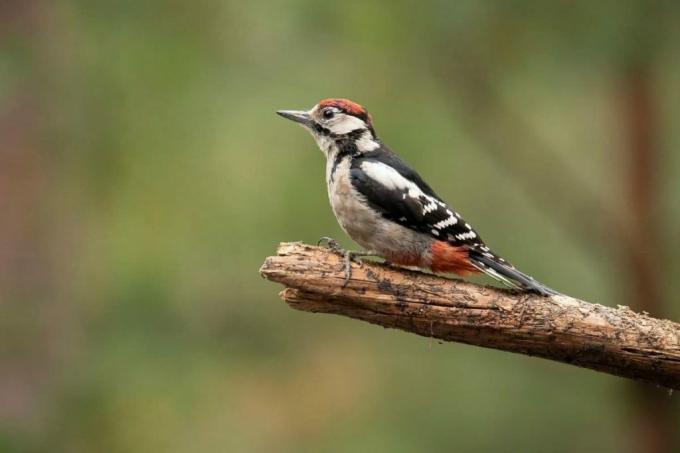
- Scientific name: Leiopicus medius
- Plumage color: black, white, red
- Size: about 21 centimeters
- Life expectancy: 5 to 10 years
- Diet: berries, insects, nuts, seeds
- Difference between males and females: Females do not have a red hood
- Occurrence: North Africa to northern Eurasia
- Migratory bird: no, it only hovers short distances in very cold regions
Types of R - V
Red cardinal
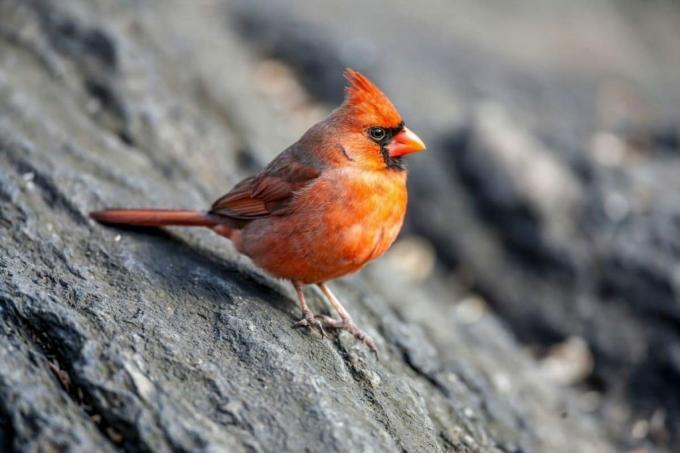
- Scientific name: Cardinalis cardinalis
- Plumage color: red, brownish
- Size: about 21 to 24 centimeters
- Life expectancy: up to 15 years
- Diet: berries, insects, nuts, seeds, buds, flowers
- Difference between males and females: females have gray-brown plumage, males are red
- Occurrence: Europe, Africa, America
- Migratory bird: Standing bird
Note: The red cardinal is a bird that has not only a red hood, but completely red plumage. That makes it all the more distinctive.
Black woodpecker

- Scientific name: Dryocopus martius
- Plumage color: mainly black, white spot, red cap
- Size: about 23 centimeters, up to 50 centimeters with tail feather
- Life expectancy: around 10 to 15 years
- Food: mainly insects but also seeds, nuts and berries
- Difference between males and females: males have a red hood, females have a red patch on the neck
- Occurrence: North Africa to northern Eurasia
- Migratory bird: only to a limited extent, short-distance migrant in particularly cold regions
goldfinch

- Scientific name: Carduelis carduelis (also known as goldfinch)
- Plumage color: black, white, red, yellow
- Size: about 12 centimeters
- Life expectancy: up to 5 years
- Diet: berries, insects, nuts, seeds
- Difference between males and females: Females have slightly paler plumage and are smaller than males
- Occurrence: North Africa to northern Eurasia, South America, Oceania
- Migratory bird: only in regions with particularly cold winters
Types from W - Z
White-backed woodpecker

- Scientific name: Dendrocopos leucotos
- Plumage color: black, white, red hood with blue spots
- Size: up to about 28 centimeters
- Life expectancy: 6 to 11 years
- Diet: mainly insects in all stages of development
- Difference between males and females: Females do not have a red hood
- Occurrence: North Africa to southern Europe
- Migratory bird: yes
hoopoe

- Scientific name: Upupa epops
- Plumage color: black, white, orange to reddish brown, reddish to red cap with black spots
- Size: about 28 centimeters
- Life expectancy: up to 10 years
- Diet: insects and small vertebrates such as lizards
- Difference Between Males and Females:
- Occurrence: North Africa, northern Eurasia up to Indochina
- Migratory bird: yes, overwintering takes place in Africa
frequently asked Questions
Numerous other birds also have red hoods. These include species that are kept as pets in our latitudes, such as roseheads and other parrots, canaries and exotic finches.
The birds can often be easily distinguished by the drawing of the rest of the plumage, the size and shape of the beak. To be on the safe side, photos can be taken for comparison.
That generally depends on the respective species. In some the males are more conspicuously colored, in others it is difficult to distinguish between them.



